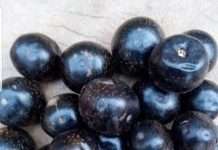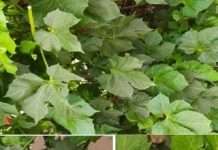By Prof. Ernest B. Izevbigie
Diabetes is a chronic metabolic illness, characterised by high levels of blood glucose or sugar that result in deleterious effects on many organs, such as the kidney, the heart, the eyes, and the nerves. The most prevalent is type 2 diabetes (T2D), considered to be adult diabetes or usually obesity-induced. It occurs due to inadequate insulin production or compromise in insulin sensitivity.
Type 1 diabetes (T1D), considered juvenile diabetes and insulin-dependent, is a chronic disease in which the pancreas produces little or no insulin at all. Globally, 537 million people are estimated to be living with diabetes, which is 1: 10 people. The number is predicted to increase to 643 million people by 2030 and 783 million people by 2045, according to the International Diabetes Federation (IDF) Diabetes Atlas.
In 2017, the top five countries in Africa for the prevalence of diabetes were Ethiopia, South Africa, Democratic Republic of Congo (DRC), Nigeria, and Tanzania (www. Visual Capatalist.com). Nigeria, with about 1.2 million people living with diabetes, tops the list; followed by South Africa, with 841,000; DRC, 552,000; Ethiopia, 550,000; and Tanzania, 380,000 people, respectively.
Studies have shown that the main risk factors associated with type 2 diabetes (T2D) are high body mass index (BMI), poor dietary choices, sedentary lifestyle or lack of physical activities, and alcohol and tobacco use. Consequently, these risk factors (especially diet) represent control points or possible strategies to turn the tide of the diabetic scourge in our society.
It is therefore not surprising that, in the last decade or so, Nigeria has witnessed an increase in the campaign of the health benefits of green/unripe plantain (Musa paradisiaca) flour and wheat (Triticum aestivum) flour, as replacement for garri (Manihot esculenta) granule and yam (Dioscorea alata) flour. Unfortunately, these claims are not only anecdotal but they have been debunked by emerging and compelling scientific data. Put simply, the claims are all myths!
As a matter fact, results of the proximate analyses carried out on green/unripe plantain flour, wheat flour, garri and cassava flours also contradict the putative health benefits of green/plantain flour and wheat flour. In this review, emphasis will be placed on carbohydrate (fibre and carbohydrate) because of their involvement in the etiology of diabetes.
Results show carbohydrate content was highest in cassava flour, aka santana, (85.8±0.55 %) > wheat flour (82.33±1.66 %) > unripe plantain (81.97±1.52 %) > garri (79.01±1.00 %) which has the lowest carbohydrate content. However, the differences observed in carbohydrate levels were not statistically significant (P>0.05).
Carbohydrate (%) Crude Fibre (%)
1. Cassava Flour 85±0.55 1.67±0.42
2. Wheat Flour 82.33 ± 1.66 3.00±0.87
3. Unripe/ Green Plantain Flour 81.97 ± 1.52 1.6±0.87
4. Garri granule 79.01 ± 1.0 3.13± 0.81*
As shown in the above table, compared to the four food staples listed above (cassava flour, wheat flour, green/ unripe plantain flour and garri granule), garri not only contains the least amount of carbohydrate, which is desirable – though not statistically significant (P>0.05) – it also contains the highest amount of fibre, which is also considered desirable because fibre provides a variety of health benefits, including damping the glycaemic effect of carbohydrate.
In summation, green/ unripe plantain and wheat flour cannot be touted as healthier alternatives to garri granules for diabetics or pre-diabetics. It is therefore recommended that diabetics or pre-diabetics limit their consumption of these foods.
References
1. Facts and Figures, (International Diabetes Federation [IDF] Diabetes Atlas, 2021
2.Jamison DT, Feachem RG, Makgoba MW et al., Washington (DC): The International Bank for Reconstruction and Development / The world Bank, 2006















